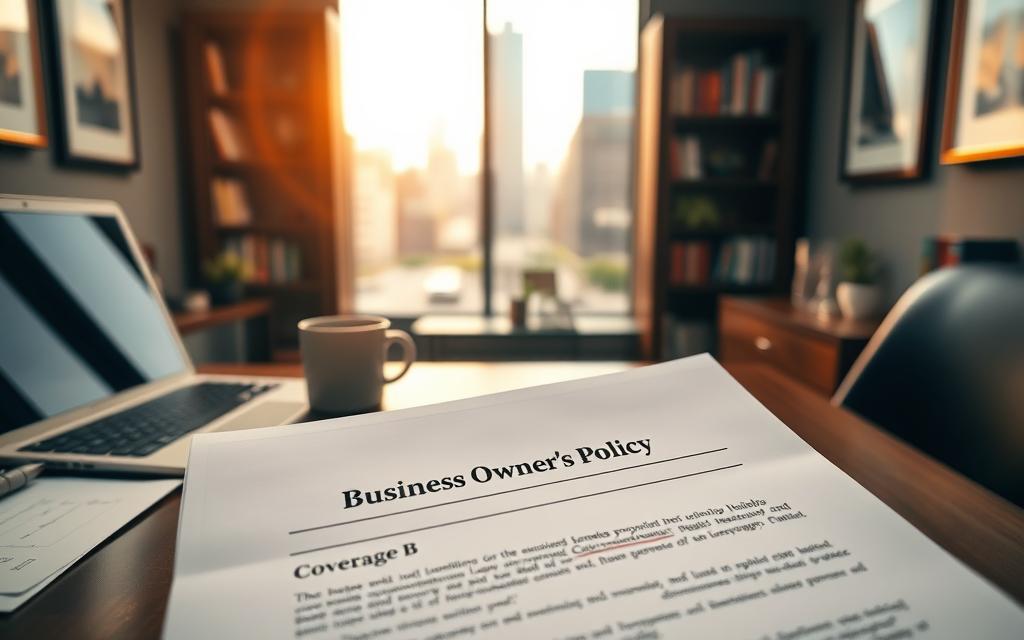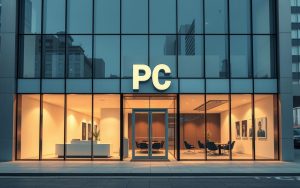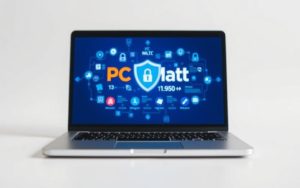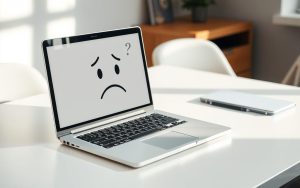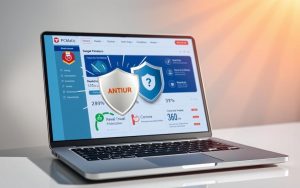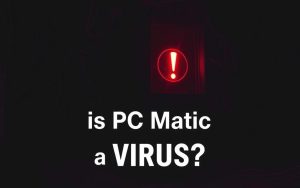Table of Contents
Many business owners rely on a BOP to safeguard their assets. This bundled insurance combines property and liability protections into one convenient policy. But when it comes to electronics like desktops or laptops, questions often arise.
Coverage B specifically handles building and personal property used for operations. However, standard plans may have limitations for high-value equipment. The Small Business Administration advises reviewing policy details carefully before signing.
Some assume all office technology automatically qualifies for protection. In reality, certain scenarios like data breaches or accidental damage might create gaps. Understanding these nuances helps prevent unexpected financial setbacks.
What Is a Business Owner’s Policy (BOP)?
Small business owners need comprehensive protection without juggling multiple policies. A Business Owner’s Policy (BOP) solves this by merging essential coverages into one cost-effective package. This streamlined approach helps entrepreneurs focus on growth rather than paperwork.
Definition and Key Components
A BOP bundles three critical protections: commercial property, general liability, and business interruption insurance. Property coverage safeguards physical assets like buildings and equipment. Liability protection handles third-party injury or damage claims.
Business income coverage compensates for lost revenue during closures. “BOPs offer small businesses the same protections large corporations get, just scaled to their needs,” notes an industry expert. Optional add-ons like flood or crime coverage provide extra security.
Who Qualifies for a BOP?
Eligibility depends on size and risk factors. Most insurers require:
- Fewer than 100 employees
- Annual revenue below $1 million
- Low-risk operations (e.g., retail, offices)
A 15-employee boutique qualifies, while a manufacturing plant might not. Compared to standalone policies, BOPs typically save 15-25% on premiums. For larger operations, commercial package policies become necessary.
Common industries benefiting from BOPs include restaurants, apartment complexes, and professional services. However, high-risk fields like construction usually need customized solutions.
Understanding Coverage B: Commercial Property Insurance
Commercial property safeguards form the backbone of risk management. Coverage B within a BOP specifically addresses physical assets vital to operations. This segment shields against financial losses from unexpected events like fires or theft.
What Does Coverage B Typically Include?
Four key protection zones define this coverage:
- Owned structures (buildings, warehouses)
- Business contents (furniture, equipment)
- Third-party property in your care (client laptops during repairs)
- Exterior fixtures (signs, fences)

Policies typically offer two formats: *named-peril* or *all-risk*. The first lists specific threats like fire or vandalism. The second covers all perils unless explicitly excluded. “All-risk policies cost 10-15% more but minimize claim disputes,” advises a risk consultant.
Types of Property Covered
Common covered perils include:
- Fire and explosions
- Windstorms
- Theft
- Falling objects
Business interruption insurance compensates for income loss during closures. Calculations often use 12 months of revenue data. For example, a restaurant rebuilding after a kitchen fire could claim lost profits plus extra expenses like temporary equipment rentals.
Are Computers Excluded Under Coverage B of a BOP?
Electronic devices like laptops and servers often fall into gray areas within Coverage B. While standard business property protections apply to desks or filing cabinets, technology faces unique risks. Policyholders might assume their equipment is fully covered—until a denied claim reveals gaps.
Standard Exclusions in BOPs
Most policies explicitly omit:
- Cyberattacks or data breaches
- Mechanical breakdowns (e.g., hard drive failure)
- Loss of data due to power surges
“A marketing firm learned this the hard way when their server crash wasn’t covered,” shares an insurance adjuster. Basic coverage typically handles physical damage like fire or theft but not internal malfunctions.
Special Considerations for Electronic Equipment
Office PCs might qualify as business personal property, while specialized IT infrastructure often requires endorsements. Valuation methods also impact payouts:
| Coverage Type | Basic BOP | EDP Endorsement |
|---|---|---|
| Replacement Cost | Rare | Common |
| Data Recovery | No | Yes |
| Mechanical Failure | No | Optional |
Actual Cash Value (ACV) accounts for depreciation, reducing payouts for older devices. For tech-heavy businesses, adding Electronic Data Processing (EDP) coverage bridges these gaps.
How to Insure Computers Under a BOP
Tech-dependent businesses need tailored solutions for protecting digital assets. Standard business property coverage often fails to address modern operational risks. Specialized endorsements bridge these gaps for critical equipment like servers and workstations.
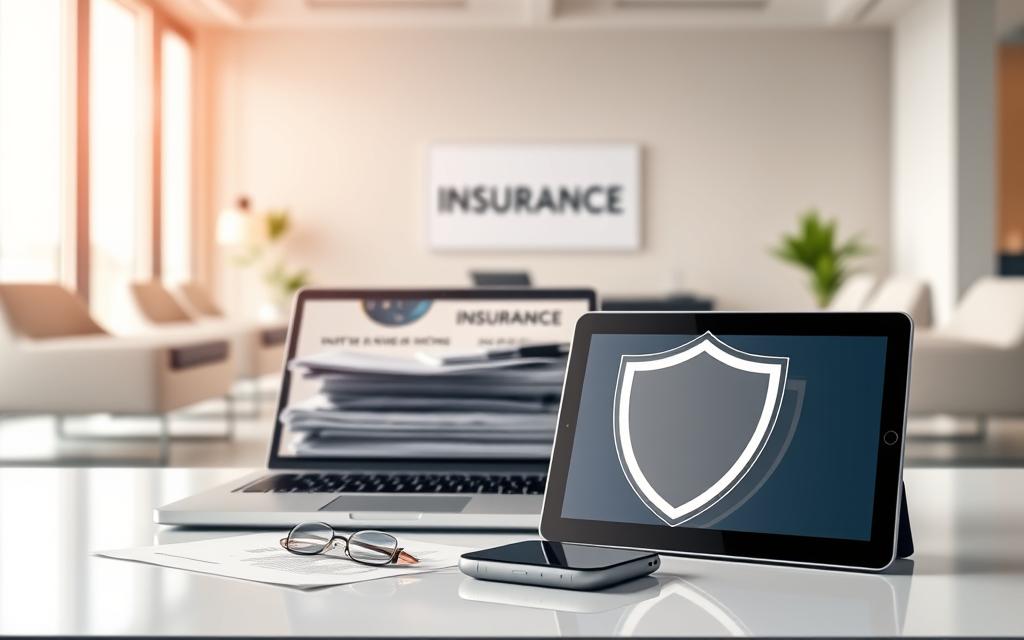
Endorsements and Additional Coverage Options
Electronic Data Processing (EDP) riders transform basic insurance into comprehensive tech protection. The endorsement process involves three key steps:
- Inventory: Document all devices with serial numbers and purchase dates
- Appraisal: Professional valuation for high-value systems
- Scheduling: Adding specific items to the policy
These add-ons typically increase premiums by 15-30% but provide crucial benefits. “A design firm avoided $28,000 in losses when their render farm was covered under an EDP endorsement,” shares a claims adjuster.
Valuation Methods: Replacement Cost vs. Actual Cash Value
Understanding compensation differences prevents settlement surprises:
| Factor | Replacement Cost | Actual Cash Value |
|---|---|---|
| Definition | Current market price for new equivalent | Replacement cost minus depreciation |
| 3-Year-Old $10k System | $10,000 | $4,000 |
| Availability | Requires special endorsement | Standard in most BOPs |
Cyber coverage often requires proof of regular data backups. Some insurers mandate encrypted cloud storage or offsite servers. For maximum protection, consider add-ons like:
- Data restoration services
- Cyber extortion funds
- Business interruption for tech outages
Common Exclusions in Business Owner’s Policies
Not all risks qualify for protection under standard business policies. While Coverage B safeguards physical assets, certain scenarios demand extra insurance. Recognizing these gaps early prevents denied claims and financial strain.
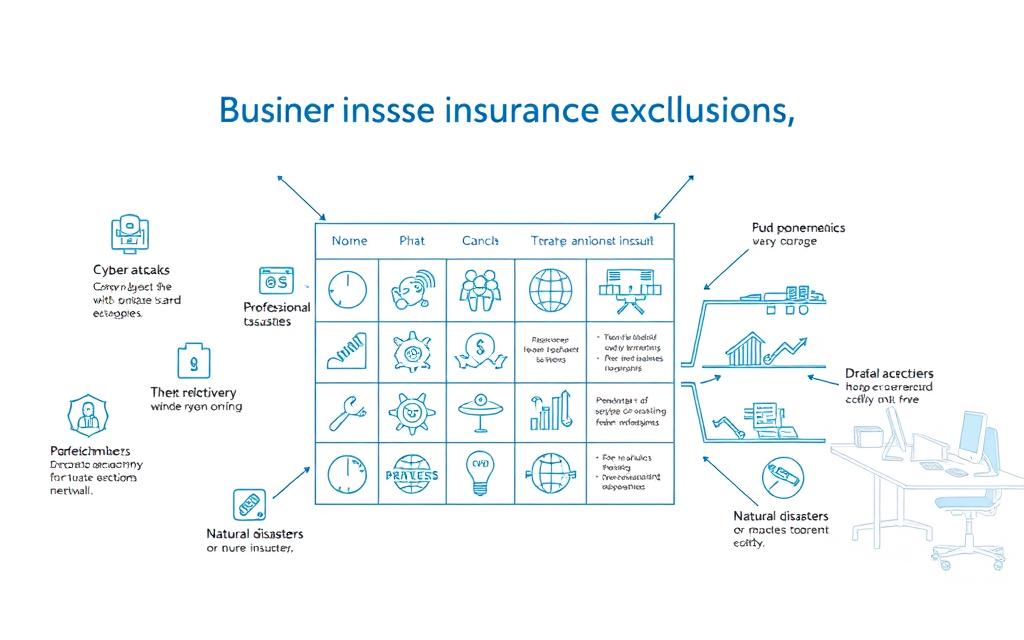
What Coverage B Doesn’t Cover
Five critical exclusions frequently catch business owners off guard:
- Employee injuries: Requires workers’ compensation insurance
- Auto accidents: Commercial auto policies handle vehicle-related damage
- Intentional acts: Fraud or illegal actions void coverage
- Floods/earthquakes: Separate riders or FEMA policies needed
- Professional errors: Malpractice suits need E&O insurance
“Ensuing loss” exceptions sometimes apply. For example, electrical failure might be excluded, but resulting fire damage could qualify. Always review policy fine print with an agent.
When to Consider Separate Policies
Standard BOPs work for small operations, but these factors signal need for customization:
| Scenario | BOP Limitation | Solution |
|---|---|---|
| >$10M revenue | Property caps | Commercial package policy |
| Multiple locations | Territorial restrictions | Blanket property coverage |
| Product manufacturing | No product liability | Standalone general liability |
A Midwest manufacturer learned this after defective parts triggered $200k in claims. Their BOP lacked product liability, forcing out-of-pocket settlements.
SBA-recommended checklist for coverage gaps:
- Audit high-value equipment annually
- Compare perils covered vs. regional risks
- Document business growth triggers (new hires, locations)
Cost and Eligibility Factors for BOPs
Pricing for a Business Owner’s Policy varies significantly based on multiple factors. Insurers evaluate risk profiles differently, which directly impacts premiums. Understanding these variables helps business owners budget effectively while securing adequate protection.

Pricing Variables for Property Coverage
Five key elements influence insurance costs:
- Location: ZIP codes with higher crime rates or natural disaster risks increase premiums
- Building materials: Fire-resistant structures qualify for discounts up to 15%
- Security systems: Monitored alarms reduce burglary risks and lower costs
- Claims history: Businesses with frequent claims face 20-50% higher rates
- Revenue size: Companies exceeding $1 million often need customized solutions
“A restaurant in Miami pays triple what a Chicago IT firm does for similar coverage,” notes an underwriter. This disparity stems from hurricane exposure and kitchen fire hazards.
Industry-Specific Risks and Limits
Some sectors face steeper insurance costs due to inherent dangers. The National Association of Insurance Commissioners identifies these high-risk fields:
| Industry | Premium Multiplier | Common Claims |
|---|---|---|
| Construction | 2.5x | Equipment theft, worksite injuries |
| Hospitality | 2.2x | Slip-and-fall, foodborne illness |
| Manufacturing | 3x | Machine breakdowns, product defects |
Micro-BOPs offer affordable options for very small operations. According to industry guidelines, these streamlined policies suit businesses with:
- Under $500,000 annual revenue
- Fewer than five employees
- Low-risk operations like consulting or retail
Valuation methods also affect payouts. Replacement cost coverage proves crucial for tech-heavy businesses needing frequent equipment upgrades. Always compare multiple quotes to balance cost and protection levels.
Conclusion
Standard BOP policies often leave gaps for tech assets. Without proper endorsements, critical equipment like servers or workstations may lack full protection. Scheduled listings help secure adequate coverage for these items.
Annual reviews with insurance advisors prevent costly surprises. Tech-reliant firms risk severe financial hits if their policy falls short. Underestimating replacement values can trigger steep out-of-pocket expenses.
Take action now to safeguard your operations. Create a detailed inventory of all devices. Obtain current replacement quotes for accurate valuation. Discuss Electronic Data Processing riders with your provider to bridge critical gaps.
Proactive planning ensures seamless operations when unexpected events strike. The right business protections keep your company resilient against evolving risks.
FAQ
What is a Business Owner’s Policy (BOP)?
A BOP combines general liability and commercial property insurance into one package. It’s designed for small businesses to protect against common risks like property damage, lawsuits, and business interruption.
Does Coverage B in a BOP include computers?
Coverage B typically covers business property, but standard policies may exclude electronic equipment like computers. Check your policy or add endorsements for full coverage.
What types of property are usually covered under a BOP?
Coverage B often includes buildings, inventory, furniture, and machinery. However, specialized equipment like computers may require additional protection.
How can I insure my business computers under a BOP?
You may need an endorsement or separate policy to cover computers. Discuss replacement cost vs. actual cash value options with your insurance provider.
What are common exclusions in a BOP?
Standard exclusions often include floods, earthquakes, employee injuries, and data breaches. Separate policies may be needed for full protection.
How much does a BOP cost for small businesses?
Premiums vary based on industry, location, and coverage limits. High-risk sectors like restaurants or retail may pay more than low-risk businesses.
Can a BOP cover lost income from business interruptions?
Yes, many BOPs include business interruption insurance to compensate for lost revenue and extra expenses after a covered loss, like a fire.


